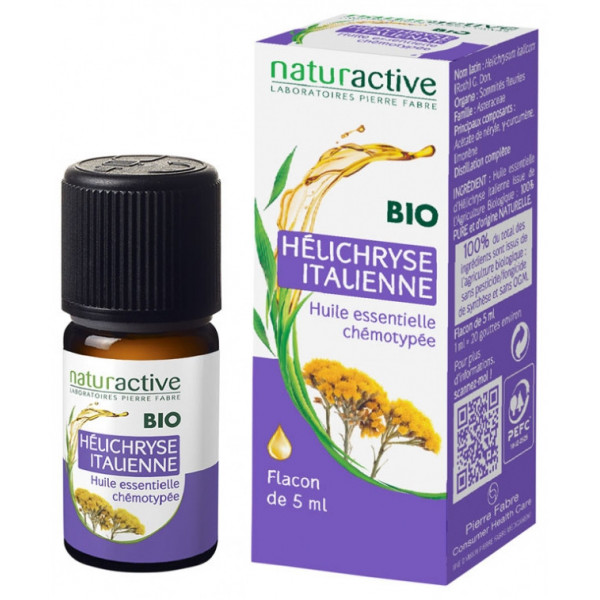Indications
Treats skin capillary fragility (bruises, petechia) and improves the healing process by stimulating the venous circulation.
Botany information
Helichrysum italicum ssp serotinum Botanical family: Asteraceae Producing organ: flower head Chemotype: neryl acetate, gamma-curcumene, limonene Origin: Italy
Botany specifications
The Helichrysum is a perennial plant found on dry land, known for its greyish coloured foliage, pale yellow flowers and its surprising curry fragrance. The plant provides very little essential oil, which makes it even more previous given its extraordinary effectiveness.
Use
Diffusion +, Bath +, Massage +++, Orally +
Ambient setting: on its own or in a mixture by regular low heat evaporation.
Atmospheric diffusion: not recommended
Dermal application: pure (one-time use) or diluting 5% maximum in vegetable oil.
Orally: exceptional use. Only after medical consent.
Inhalation: not recommended.
Practical advice
Initial care : Immediately after a shock or knock, the Helichrysum oil can be exceptionally used in its pure state. 1-2 drops onto the ‘bruise” or swelling. Gently massage in. Repeat if necessary without exceeding 6 drops the first day. Then apply in diluted form.
Circulation : Combine cypress EO and dilute in 5% of macadamia essential oil.
Wrinkles and Rosacea : Oil formula for the face: prepare a vial with half Argan oil and half Musk Rose oil and dilute it in a 1% mixture of Italian helichrysum EO + ylang ylang EO. Avoid applying around the eyes. This mixture can also be used for Rosacea.
Contraindication
Do not get confused with this Helichrysum (Italien) and the ones from Yugoslavia, the Balkans and Madagascar! This oil is not a thinning oil so individuals taking anticoagulants can also used this oil. This essential oil is not allowed during the whole pregnancy. It is also not to be used during breast feeding.




